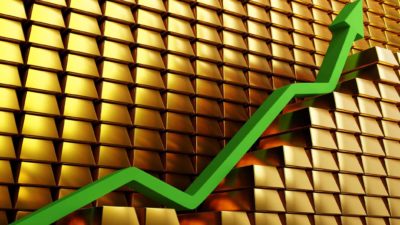1) Overnight, the selling in US stocks continued after the Bank of England Governor Andrew Bailey warned fund managers they had until the end of this week to unload bond positions they can't maintain.
"My message to the funds involved and all the firms is you've got three days left now," Bailey said at the Institute of International Finance annual meeting in Washington on Tuesday. "You've got to get this done."
This is one of those "cracks" JPMorgan chief Jamie Dimon talked about yesterday, saying the stock market could fall another 20% lower from here.
The slow grind down in stocks continues, as does the slow grind up in bond yields. As usual, tech stocks bore the brunt of the selling, with the NASDAQ-100 Index (NASDAQ: NDX) falling more than 1%.
Year to date, the Nasdaq 100 index is now down almost 35%. The aggregate bond index – usually seen as a safe investment – is down around 14% so far in 2022, and on track for its worst year since 1931. Bonds prices move down when interest rates move higher.
2) It's a great time to have cash, just about the only asset class that hasn't gone down in this brutal year of investing. As an added bonus, you can now finally earn a return on your cash, albeit only around 2.5%, and less than inflation.
So, with so much uncertainty around, and creditable calls from the likes of Jamie Dimon about more pain to come, why not sell up everything and go to cash?
According to JPMorgan Asset Management, if you had invested $10,000 and missed the 10 best days from 2002 to 2021, your gains would have been cut by more than half. If you had missed 30 days, you would have missed out on more than 80% of potential gains.
Last Tuesday – when the RBA raised the cash rate by 'only' 25 basis points and the S&P/ASX 200 Index (ASX: XJO) soared 3.75% higher – may not have been one of those "10 best days," but it's certainly a day you don't want to miss.
"Best days" usually happen in times of heightened volatility. One of those "best days" may signal the end of the bear market. We just don't know when that will be. In the meantime, while we wait, we keep our eyes on the horizon, looking three to five years hence.
3) Speaking of volatility, this bear market is nothing like the GFC or the COVID crash.
The volatility index, commonly known as the VIX, is currently trading at 33. That's above its long-term average of around 20, but way off the 80 level it hit in November 2008, and its record ever high of 82 in March 2020.
Harking back to the GFC – easily the most painful period of my investing life – although the VIX peaked in November 2008, the market didn't bottom until March 2009.
I vividly remember one "10 best days" in October 2008 when the Dow Jones Industrial Average Index (DJX: .DJI) soared an astonishing 11%, at the time, its best percentage gain since 1933.
On that one day, the Morgan Stanley (NYSE: MS) share price soared a quite unbelievable 87% higher… again, I repeat, in just one day.
Like then, there's no way of ever picking the bottom of the market. More likely is you'll be fully invested way before the market hits its nadir. When that happens, all you can do is trade in and out of current portfolio positions – out of one cheap stock and into one that's even cheaper – or sit and wait for the market to eventually bottom, then turn higher.
4) This "inflation shock" stock market crash feels like the dot-com bust. Volatility was elevated – like now – but didn't spike much above 40. It was just a slow, painful grind lower – like now.
It will only be in hindsight that we know the market has bottomed. In the meantime, a strategy slowly and steadily deploying any cash you have into the market – either through a passive ETF like the Vanguard Australian Shares Index Fund (ASX: VAS) or individual companies – should serve you well, over time.
Yesterday, a limit order I had previously placed was triggered, and I bought shares in a microcap stock with these qualities…
- Its share price is down over 80% in the past 12 months;
- On a daily basis, is buying back its own shares;
- Cash makes up almost 60% of its market capitalisation;
- No debt;
- Trades on 4 times EBITDA;
- FY22 revenue grew almost 70%.
It looks to be one of the cheapest stocks trading on the ASX… although it undoubtedly has some company.
I'm already in the red, such is the nature of this brutal bear market, especially in small and micro industrial (non-mining and energy) stocks. But, I reckon the odds are in my favour, over time.









